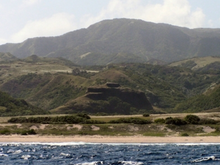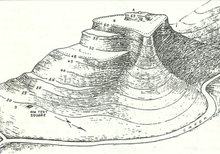
A hillfort is a type of fortified refuge or defended settlement located to exploit a rise in elevation for defensive advantage. They are typically European and of the Bronze Age or Iron Age. Some were used in the post-Roman period. The fortification usually follows the contours of a hill and consists of one or more lines of earthworks or stone ramparts, with stockades or defensive walls, and external ditches. If enemies were approaching, the civilians would spot them from a distance.

Batanes, officially the Province of Batanes, is an archipelagic province in the Philippines, administratively part of the Cagayan Valley region. It is the northernmost province in the Philippines, and the smallest, both in population and land area. The capital is Basco, located on the island of Batan.
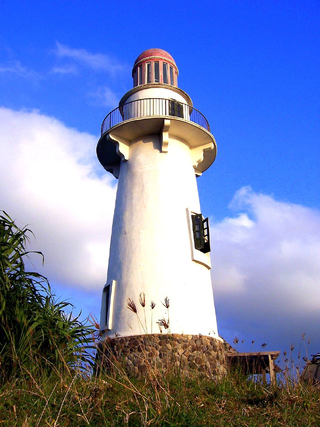
Basco, officially the Municipality of Basco, is a 5th class municipality and capital of the province of Batanes, Philippines. In the 2020 census, it had a population of 9,517 people.
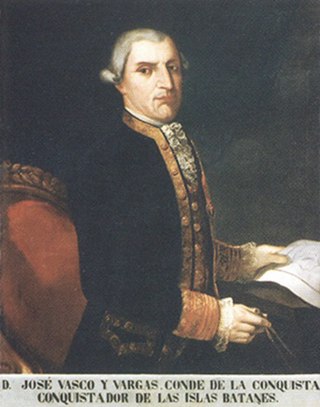
José Basco y Pérez de Vargas, 1st Count of the Conquest of Batanes Islands (Spanish: José Basco y Vargas, primer conde de la conquista de las islas Batanes was a naval officer of the Spanish Navy who served as the 53rd governor of the Spanish Philippines under the Spanish Empire, from 1778 to 1787. An "economic minded" governor-general in Spanish-ruled Philippines, his rule tried to subjugate the Ivatan natives of Batanes, which led to the murder of Ivatan indigenous hero Aman Dangat.

The Ivatan language, also known as Chirin nu Ivatan, is a Philippine language of Austronesian origins spoken in the Batanes Islands of the Philippines.

Itbayat, officially the Municipality of Itbayat,, is a 5th class municipality in the province of Batanes, Philippines. In the 2020 census, it had a population of 3,128 people.

Sabtang, officially the Municipality of Sabtang, is a 6th class municipality in the province of Batanes, Philippines. According to the 2020 census, it has a population of 1,696 people.

Uyugan, officially the Municipality of Uyugan, is a 6th class municipality in the province of Batanes, Philippines. According to the 2020 census, it has a population of 1,380 people.

Mavulis Island is the northernmost of the Batanes Islands and the northernmost island in the Philippines. It is part of the province of Batanes. The island is uninhabited but it is guarded by the military. It is also frequently visited by local fishermen for fishing adventures.

Mount Iraya, is a dormant stratovolcano on Batan Island and the highest point in the province of Batanes, Philippines.

The Batanic languages are a dialect cluster of the Austronesian language family. They are spoken on Babuyan Island, just north of Luzon; three of the Batanes Islands, between the Philippines and Taiwan; and on Orchid Island of southern Taiwan.

The Ivatan people are an Austronesian ethnolinguistic group native to the Batanes and Babuyan Islands of the northernmost Philippines. They are genetically closely related to other ethnic groups in Northern Luzon, but also share close linguistic and cultural affinities to the Tao people of Orchid Island in Taiwan.
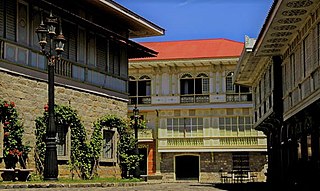
The architecture of the Philippines reflects the historical and cultural traditions in the country. Most prominent historic structures in the archipelago are influenced by Austronesian, American architectures.

Basco Lighthouse is a lighthouse in the town of Basco in Batanes, the northernmost province in the Philippines. Located in Naidi Hills in Barangay San Antonio, the lush green hills and the open sea provide a beautiful backdrop for the lighthouse. The place can easily be reached by a 1.2-km hike from the Port of Basco.

The prehistory of the Philippines covers the events prior to the written history of what is now the Philippines. The current demarcation between this period and the early history of the Philippines is April 21, 900, which is the equivalent on the Proleptic Gregorian calendar for the date indicated on the Laguna Copperplate Inscription—the earliest known surviving written record to come from the Philippines. This period saw the immense change that took hold of the archipelago from Stone Age cultures in 50000 BC to the emergence of developed thalassocratic civilizations in the fourth century, continuing on with the gradual widening of trade until 900 and the first surviving written records.

Silvino Artemio Barsana Agudo, also known as S.B. or Binong, was a Filipino businessman, lawyer, World War II veteran, and public servant. He was the governor of Batanes province from 1968 to 1971.
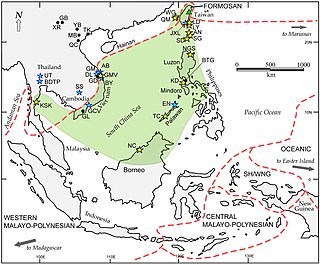
Philippine jade culture, or jade artifacts, made from white and green nephrite and dating as far back as 2000–1500 BC, have been discovered at a number of archaeological excavations in the Philippines since the 1930s. The artifacts have been both tools like chisels and ornaments such as lingling-o earrings, bracelets, and beads.
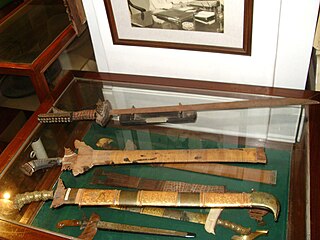
Warfare in pre-colonial Philippines refers to the military history of the Philippines prior to Spanish colonization.
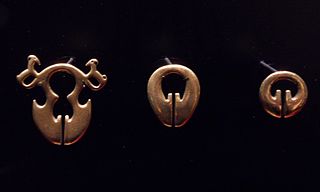
Lingling-o or ling-ling-o, are a type of penannular or double-headed pendant or amulet that have been associated with various late Neolithic to late Iron Age Austronesian cultures. Most lingling-o were made in jade workshops in the Philippines, and to a lesser extent in the Sa Huỳnh culture of Vietnam, although the raw jade was mostly sourced from Taiwan.
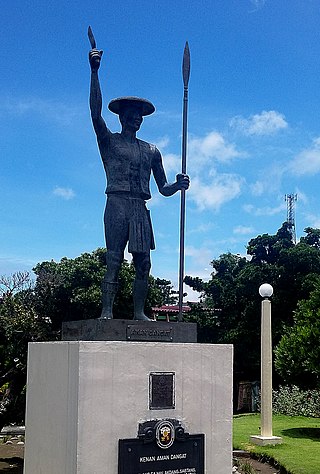
Aman Dangat, also known as "Kenan", was a powerful Mangpus of the town of Malakdang in the island of Sabtang in Batanes, Philippines who had led a revolt against the Spaniards from 1785 to 1791.
